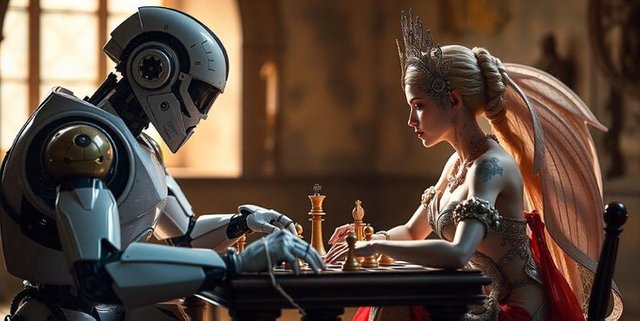FRACTION AI: The AI Revolution & the New Wave of Artists
In the ever-evolving story of human innovation, a new chapter is being written: artificial intelligence. With AI at the helm, the creative and technological landscapes are undergoing a radical transformation. The AI coin has now been tossed in the air, and the world holds its breath to see how it will land. Dystopia? Utopia? Or something else entirely?
One thing is certain: every time humanity encounters a game-changing innovation — whether it was the invention of the light bulb, the printing press, or the internet — history provides a road map. Patterns of creativity and progress, like echoes from the past, show us what to expect as we step into an era where machines think, create, and evolve alongside us. But with AI’s unpredictable nature, will history repeat itself? Or will it forge a new path altogether?
Creativity in the Wake of Innovation
Human history is filled with periods of prosperity where advancements in art and culture flourished. From the Renaissance to the Enlightenment, and even during the Industrial Revolution, humanity’s greatest innovations have consistently sparked an explosion of artistic expression.
Take the Renaissance, for example. It was a time of remarkable artistic achievement, with visionaries such as Leonardo da Vinci, Michelangelo, and Raphael reshaping our understanding of creativity. Their masterpieces were more than just works of art; they were symbols of a society that celebrated innovation and intellectual growth. These artists weren’t just creating for the sake of beauty—they were reflecting the spirit of their time, one marked by curiosity and the pursuit of knowledge.
Fast forward to the 17th century during the Enlightenment, where thinkers like René Descartes and artists like Pieter Bruegel and Francisco Goya pushed the boundaries of thought and expression. The art of this era was infused with philosophy, capturing the complexities of human emotion and societal evolution. Here, art was not only a form of self-expression but also a mirror to the rapidly changing world.
The Industrial Revolution marked yet another pivotal moment. In an age defined by machines and mechanized progress, creativity intertwined with science. Artists like Rembrandt and Van Dyck found themselves navigating a world where industry met art, blending traditional techniques with the burgeoning technology of their time. It was the birth of modern cinema, as the innovations of the Industrial Revolution inspired new ways to tell stories visually.
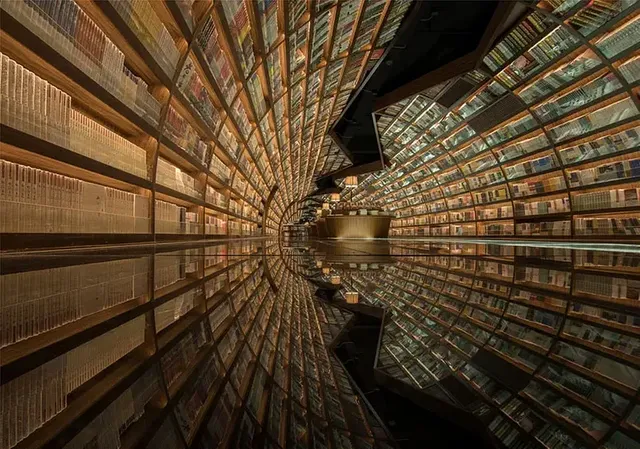
These periods of artistic evolution all had one thing in common: they emerged in times of profound technological and intellectual change. And now, as we stand at the dawn of the AI era, we are witnessing yet another surge in creativity—this time from machines.
AI Artists: A New Frontier
Today, artificial intelligence is doing more than automating tasks—it’s generating art, music, literature, and even entire digital worlds. We’re not just witnessing the creation of new artistic tools; we’re seeing the rise of AI as a participant in the artistic process.
Take AI-generated art, for example. Algorithms like GANs (Generative Adversarial Networks) are capable of producing stunning, original artwork that rivals the output of human artists. These AI systems analyze vast amounts of data, learning from centuries of human creativity, and then generate their own artistic interpretations. The results can be eerily beautiful or abstractly surreal, challenging our traditional notions of what art is and who can create it.
Just as past societies experienced a surge in artistic talent during times of abundance and innovation, we now see a similar phenomenon unfolding with AI artists. These digital creators, while lacking human emotion, have a unique ability to reinterpret patterns, styles, and trends, producing art that feels simultaneously familiar and otherworldly.
AI isn’t just limited to visual art either. AI-generated music is becoming increasingly sophisticated, with algorithms composing symphonies, songs, and soundscapes that evoke human emotion. In literature, AI can now write poetry, novels, and essays, blurring the line between human and machine-generated creativity.
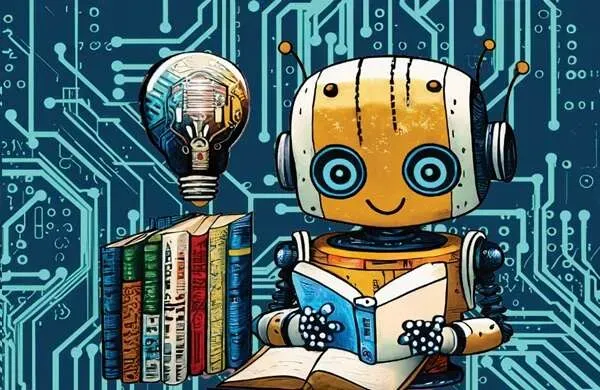
History’s Echo: Art and Prosperity
The emergence of AI artists is more than just a technological novelty—it’s a reflection of a deeper, cyclical pattern in history. Every time humanity steps into a new phase of technological abundance, a corresponding wave of artistic expression follows.
During the Renaissance, it was the rediscovery of classical knowledge that inspired artistic genius. In the Enlightenment, it was the pursuit of reason and science that fueled creativity. The Industrial Revolution brought with it a fusion of art and technology, giving rise to new forms of storytelling. And now, as we move into the era of AI, we are seeing the next evolution in this cycle.
AI-generated art is, in many ways, a spoiler alert to the future. It shows us that creativity will always find a way to thrive, even in a world dominated by machines. Where there is progress, there is art—and with AI, progress is happening at an unprecedented rate.
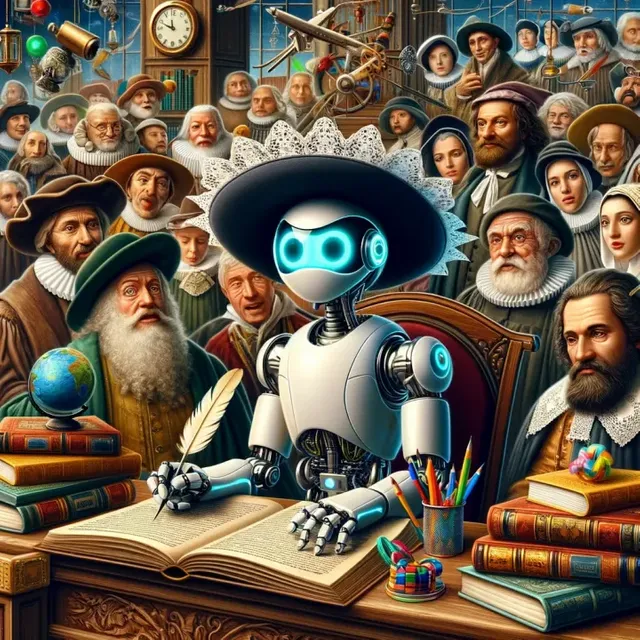
Utopia, Dystopia, or Something Else?
As AI continues to evolve, the world stands on the precipice of either a new utopia of creative collaboration or a dystopian nightmare where machines replace human artists. The truth, however, is likely somewhere in between.
In a utopian vision, AI serves as a partner to human creativity, expanding our artistic horizons and helping us explore new forms of expression. In this world, AI tools would enhance human artistry, allowing creators to work faster and with greater precision. Artists could collaborate with machines to push the boundaries of what’s possible, exploring new mediums and styles that were previously unimaginable.
On the other hand, a dystopian future might see AI replacing human artists altogether, leading to a world where creativity is automated and mass-produced. In this scenario, art loses its personal, emotional touch, becoming just another product of the machine-driven economy.
But perhaps the future isn’t as binary as we think. History has shown that innovation and creativity can coexist harmoniously, with each pushing the other to new heights. AI may well be the next step in this evolution, not as a replacement for human artists, but as a new form of creative expression. Just as the Renaissance artists blended science and art to create masterpieces, today’s artists may find ways to collaborate with AI to create a new kind of art—one that reflects both human emotion and machine logic.
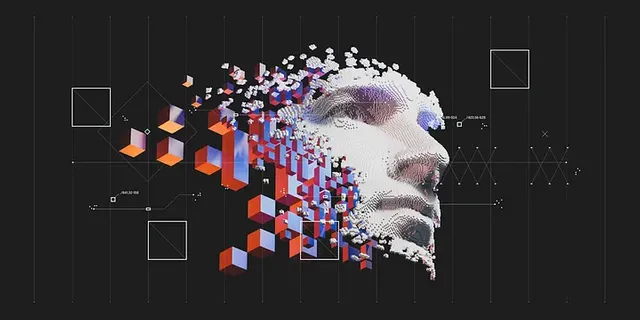
The Coin in the Air
As the AI coin continues to spin, we are left to wonder how it will land. Dystopia? Utopia? Or something else entirely? One thing is clear: the world of art is changing, and with it, our understanding of creativity.
The new wave of AI artists is both a continuation of history and a departure from it. Just as past periods of prosperity sparked artistic revolutions, the age of AI is ushering in a new era of creativity. Whether we embrace this change or resist it, one thing is certain: art will continue to evolve, just as it always has. And as history has shown us, where there is progress, there is art.
$frac #Blockchai
For More Information
Official website: https://fractionai.xyz/
Twitter: https://x.com/FractionAI_xyz
Discord : https://discord.gg/aQHEZ853z7
Linkedin: https://www.linkedin.com/company/fraction-ai/
Telegram: https://t.me/Fraction_AI
Myth VS Machine Game: https://t.me/myth_v_machine_bot
Medium : https://medium.com/@fractionai
Whitepaper: https://docs.fractionai.xyz/
Athor
Bct username: cryptoabc
Bct URL: https://bitcointalk.org/index.php?action=profile;u=1485713
Bsc Wallet: 0x5961e315bB0C16f38Da22BECBcC68A107Dc56ecf
Poa Link: https://bitcointalk.org/index.php?topic=5510904.msg64589665#msg64589665
